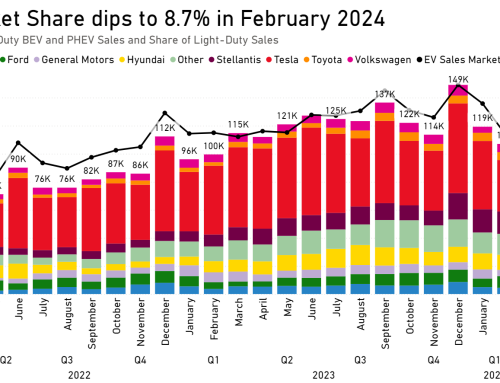
Source: Atlas Public Policy
More than a year after the first lockdowns were implemented, the United States is beginning to see the light at the end of the tunnel in the COVID-19 pandemic. Although cases are still dangerously high in many parts of the country, more than a quarter of the U.S. population has received at least one dose of the vaccine and 14 percent are fully vaccinated as of March 25th. This progress is encouraging, but many of the challenges that have been exacerbated by the pandemic are not going away anytime soon.
In unintended ways, the pandemic has provided a window into the emissions reductions and air quality improvements possible when the use of fossil fuels in transportation is significantly reduced. It also demonstrated how the most vulnerable communities are often hit the hardest in health and economic emergencies. In an effort to highlight these challenges and place them in a broader context, Atlas has partnered with the Alliance for Transportation Electrification on a new report titled “Air Quality, Climate Change, and COVID-19.” The report makes the case for transportation electrification as a part of the solution to some of the public health, environmental justice, climate, and economic crises buffeting the nation.
The urgency to promote clean energy and transportation is especially pressing from a health equity perspective. Communities of color will continue to face disproportionate air pollution burdens, contributing to worse health outcomes unless swift action is taken to reduce emissions across the U.S. economy. These communities are on the front lines of emissions from vehicles, ports, power plants, refineries, and other major sources of air pollution. Studies have shown that a one unit increase in fine particulate pollution exposure can increase COVID-19 mortality risk by up to eight percent.
Health challenges are exacerbated for those living in Western states from New Mexico to Washington, where record wildfires swept through large swaths of the region and produced unhealthy air quality for several months in 2020. Wildfires and other extreme weather events are becoming more frequent and intense due to climate change and other factors including land management practices. The record number of acres burned throughout the 2020 fire season caused a worsening in average air quality in North America compared to the previous year. No other region in the world experienced a yearly decline in air quality in 2020. In the month of September, 77 of the world’s 100 cities with the highest recorded air pollution were in the United States.
These public health and climate crises are coming at a high cost to both communities and the nation as a whole. The $3.6 billion price tag associated with direct response to wildfires and estimated $95 billion in damages from 22 extreme weather disasters tracked by NOAA in 2020 alone has placed additional strain on states seeking to provide services for their citizens as they struggle to contain the spread of the coronavirus, not to mention the inevitable impacts on rebuilding and insurance costs for families and communities. Beyond the cost of environmental crises, communities of color have faced higher levels of unemployment as a result of the pandemic compared to white communities.
While one intervention cannot solve all of the problems facing the country, the surge in transportation electrification investment and policy activity seen so far in 2021 could help to make EVs an important part of the recovery solution through economic stimulus, job creation, and a reduction in harmful air pollution. This is especially true as the Biden administration looks to tackle infrastructure investment with a focus on climate change and racial inequity in its next big legislative push. This paper is the first paper in a two-part series. The second paper in the series will provide a closer look at the specific ways transportation electrification can address these challenges and includes an exploration of near-term policy and funding opportunities to decarbonize the transportation system. Stay tuned for part two in the coming months and see part one in the EV Hub Resource Library.


